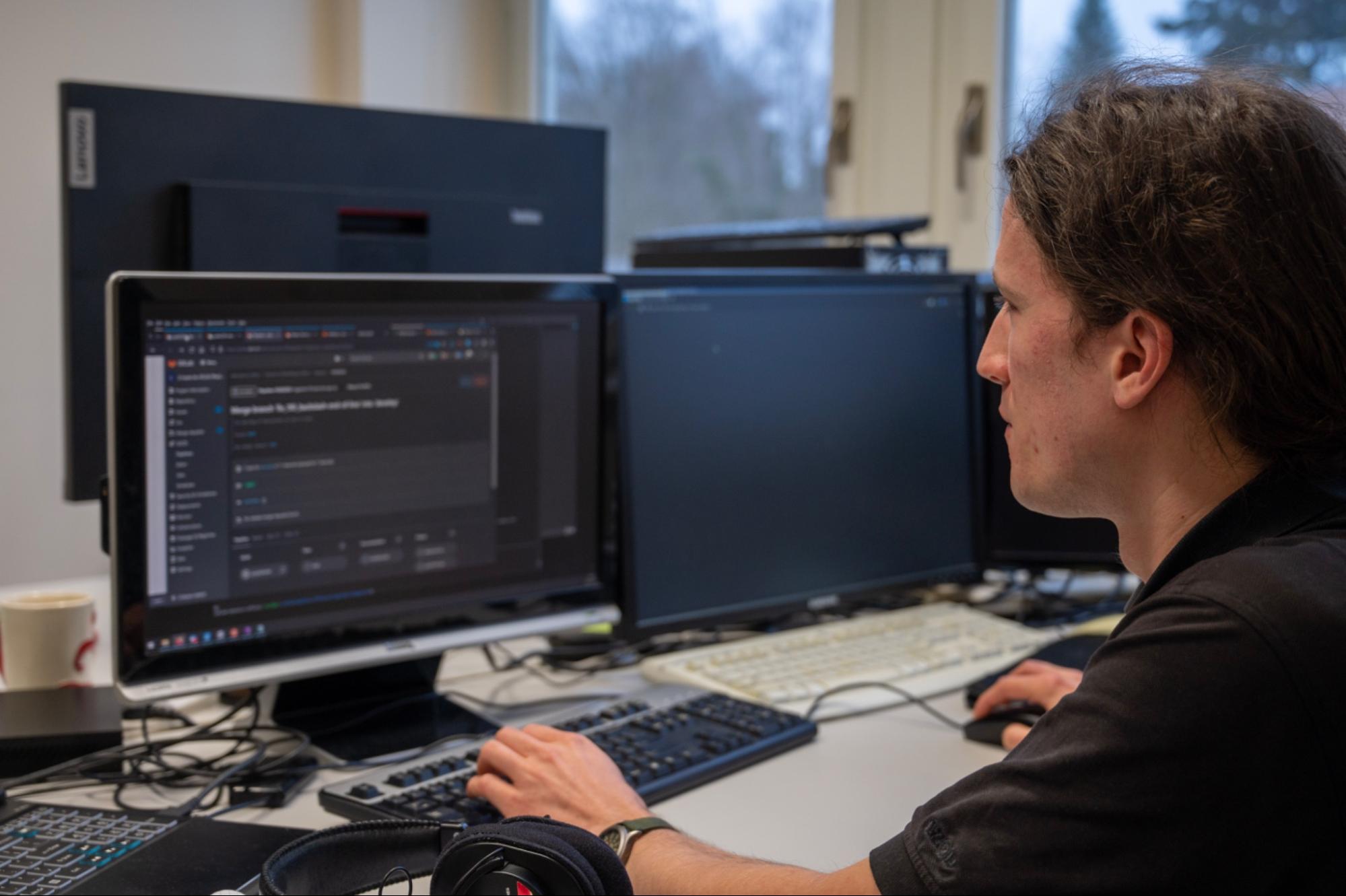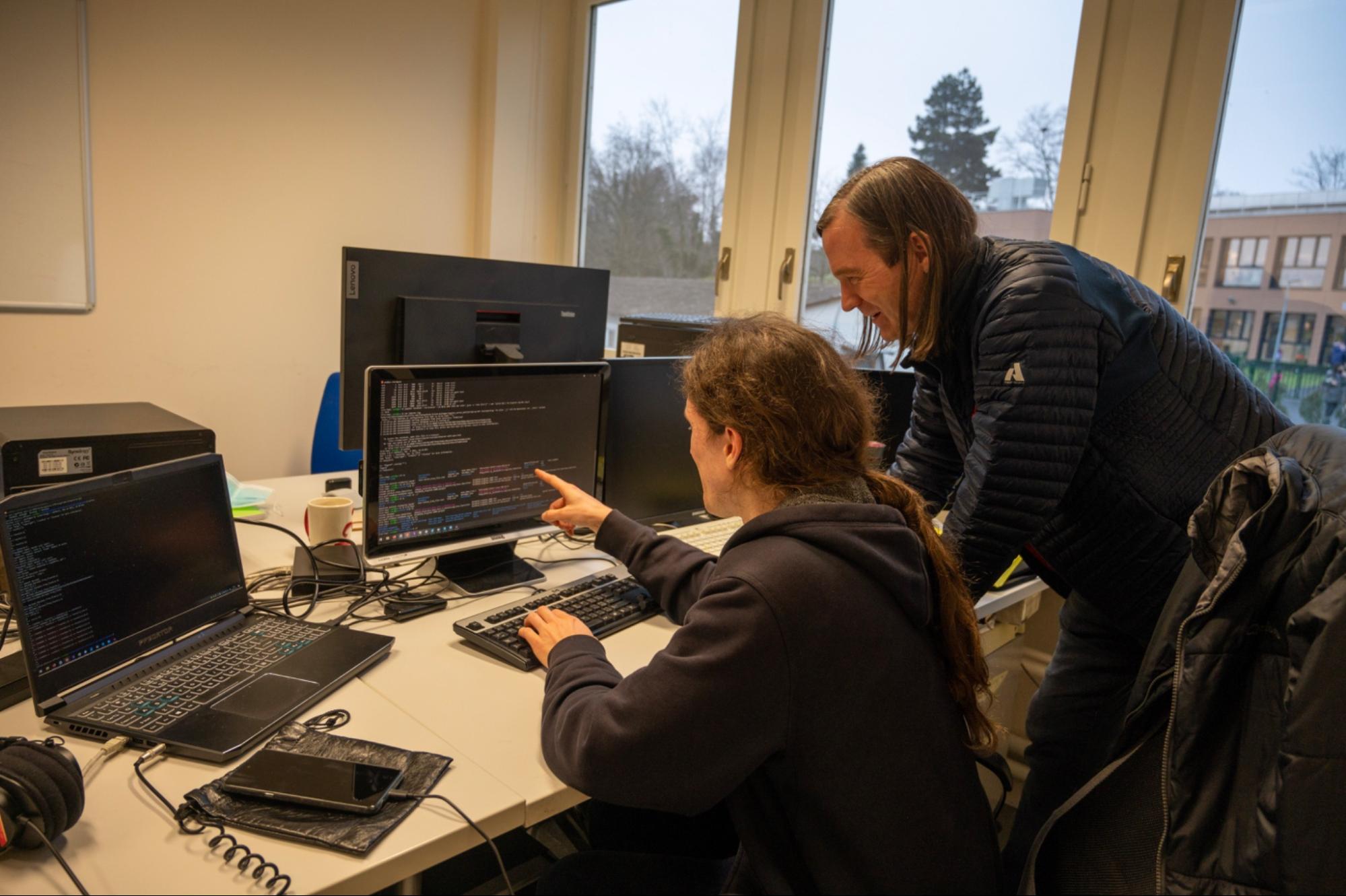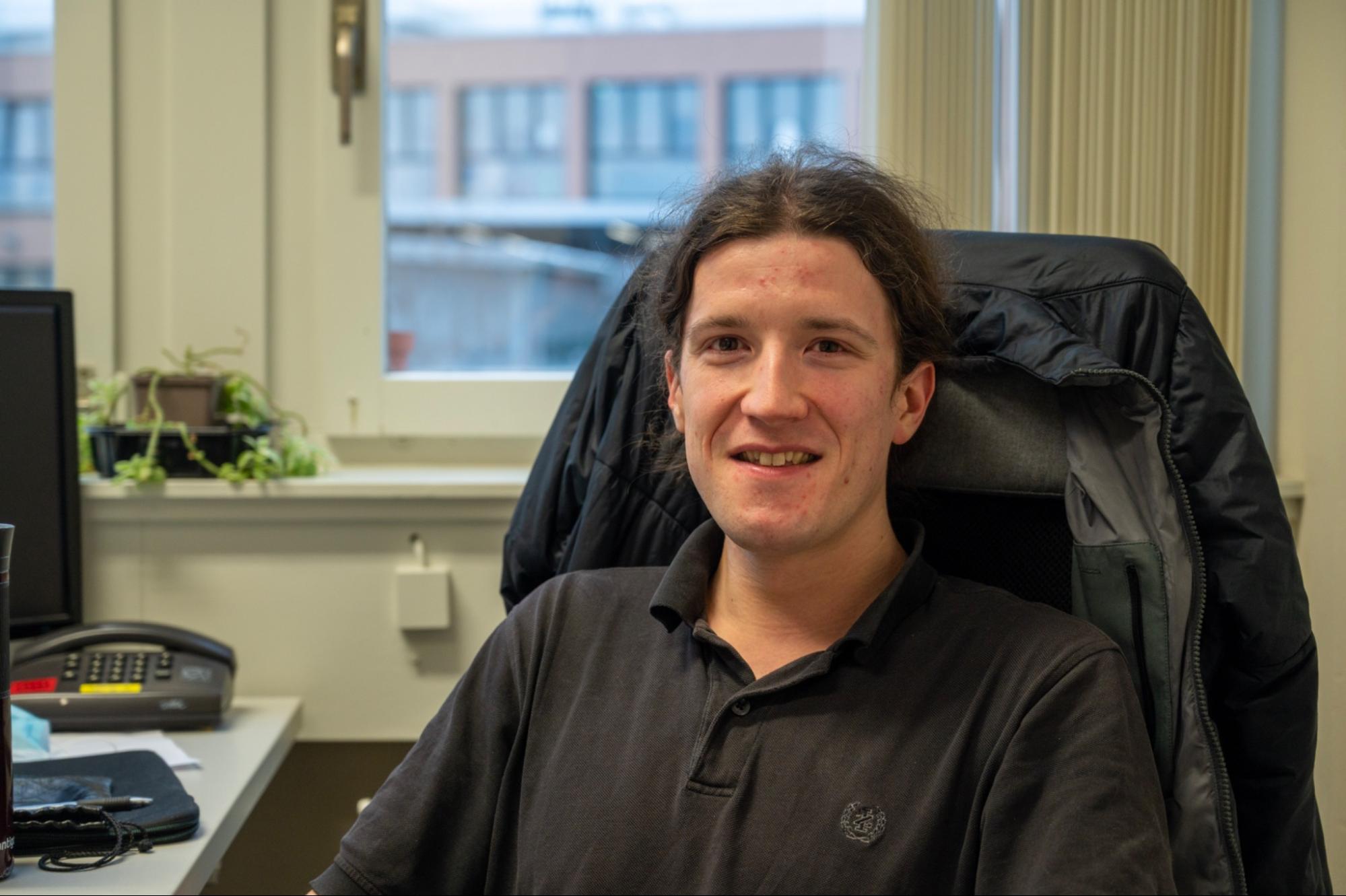When he was in the third grade, Mason Proffitt opened a book that would set his life’s trajectory.
A gift from his grandfather, “Handy Physics Answer Book,” P. Erik Gundersen, answers hundreds of questions on topics ranging from classical mechanics (“How does a bike stay upright?”) to acoustics (“How can resonance cause crystal glasses to break?”) to special relativity (“What is the twin paradox?”). To young Mason, the book represented a bridge between mathematics and the oldest questions posed by science: What is reality made of? How does it work? How did it get this way?
“I didn’t know what physics was before I got that book,” says Proffitt, now a PhD student in the University of Washington’s physics department and a member with the Institute for Research and Innovation in Software for High Energy Physics (IRIS-HEP). But he can now readily offer a definition: “Physics is the fundamental building blocks of why things work and their connection to math,” he says. “It’s math, but real.”
Proffitt, who displayed a gift for math early on, had found his calling. But for some students, modern schooling has a way of turning gifts into liabilities. Unchallenged, he quickly became bored. “School is not geared toward learning things,” he says. “It’s more like babysitting.”
He dropped out at 16, and took the most advanced physics course offered by his community college. He soon found himself drawn to high-energy physics, which studies the elementary particles that make up the universe. “It’s kind of like the physics of physics,” he says.
Today, Proffitt works at CERN, the heart of civilization’s most ambitious efforts to answer these fundamental questions.

Proffitt helps design new data analysis systems for particle-physics experiments carried out at CERN’s Large Hadron Collider. Photo Credit: Gordon Watts, University of Washington
“CERN is like a small city of physicists and engineers,” he says. “It’s very inspiring that the world has at some point trusted in science and has allowed us to build this thing.”
Established in 2018 with funding from the National Science Foundation, IRIS-HEP serves as a hub for those building the computing infrastructure for the Large Hadron Collider’s high-luminosity era, which is set to begin in 2026. As an IRIS-HEP member at CERN, Proffitt helps prototype new analysis systems, such as FuncADL, a versatile Python-based tool that enables researchers to retrieve data regardless of how it’s stored.
“Mason has been critical to this project”, says Gordon Watts, a physics professor at the University of Washington and Proffitt’s advisor. “His work transforms the high level declarative language FuncADL to a series of efficient Python operations, extracting just the data a physicist needs for their analysis.”
“The software work that I do in IRIS-HEP is so different from everything else that I’ve done, Proffitt says. “It’s designing a language.”

Proffitt worked with his adviser, Gordon Watts (shown here), to develop a new software tool that makes it easier for physicists to retrieve the data they need for their analyses. Photo Credit: Tal van Daalen, University of Washington
Proffitt also worked on the test stand for MATHUSLA, a proposed aboveground detector to catch particles missed by the subterranean LHC detectors. Sitting above the Compact Muon Solenoid experiment, MATHUSLA would search for theorized long-lived particles whose observation could shed light on questions that the Standard Model of particle physics leaves open. These include the nature of dark matter, the masses of neutrinos, and the asymmetry between matter and antimatter.
Proffitt was involved in every step of the test stand, from formulating the concept to producing a paper on the data. “The cool thing about it was that we got to build it; we got to design this data acquisition system,” says Proffitt. “It was a project that was very much in line with what I’m interested in.”
Proffitt’s self-education has given him a unique perspective on mathematics. “I’m more likely to have nontraditional approaches,’’ he says. “I don’t have the same heuristics as a group of people who went through the same classes.”
Proffit sees his work as contributing not just to high-energy physics, but also to human knowledge in general. “One of the greatest things about existence,” he says. “Is that it is possible to understand things, that it is possible to unravel things and figure out why things are the way they are.”
